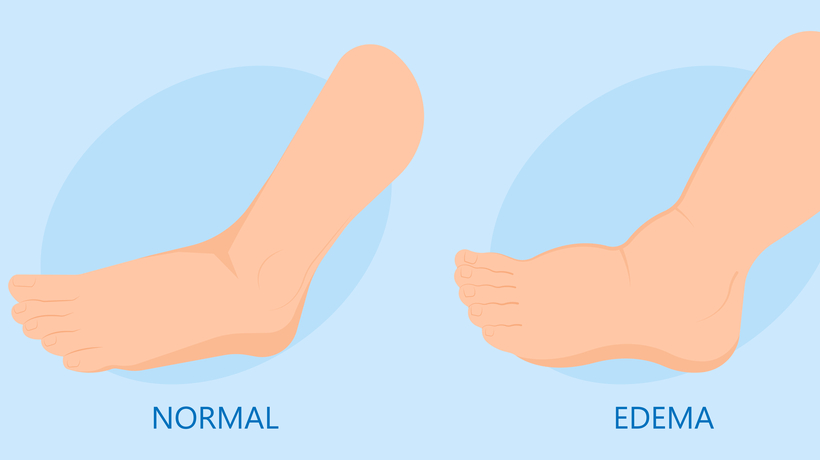Leg swelling (edema) is the result of fluid retention or inflammation. It can occur in any part of the leg including the feet, ankles, calves and thighs.
Causes of Leg Swelling
While leg swelling can be a sign of a serious condition like heart disease or a blood clot, it is more-commonly due to excess fluid build-up or inflammation, and not an immediate cause for concern.
According to the Mayo Clinic, factors that can cause fluid retention include:
- Acute kidney failure and chronic kidney disease
- Cardiomyopathy (heart muscle problems)
- Chemotherapy
- Cirrhosis (scarring of the liver)
- Deep vein thrombosis (DVT) or thrombophlebitis (blood clots that form in the legs or veins)
- Heart failure
- Hormone therapy
- Lymphedema (blockage in the lymph system)
- Obesity
- Usage of pain relievers or prescription medications
- Pericarditis (inflammation of the tissue around the heart)
- Pregnancy
- Pulmonary hypertension
- Sitting or standing for a long time
Leg swelling can also be caused by inflammation, and is a normal response to an injury or disease. It can also be caused by rheumatoid arthritis or another inflammatory disorder.
Conditions That Can Contribute to Inflammation:
- Achilles tendon rupture
- ACL injury (tearing of a ligament in your knee)
- Baker’s cyst
- Broken ankle
- Broken foot
- Broken leg
- Burns
- Cellulitis (skin infection)
- Knee bursitis (inflammation of fluid-filled sacs in knee joints)
- Osteoarthritis (the breakdown of joints)
- Rheumatoid arthritis (inflammatory joint disease)
When to See a Doctor
You should seek medical care if you experience leg swelling and any of the following symptoms, which can indicate a blood clot or a serious heart condition:
- Chest pain
- Difficulty breathing
- Shortness of breath with exercise or lying down
- Fainting or dizziness
- Coughing blood
You should seek medical care if you leg swelling does one or more of the following:
- Occurs suddenly
- Is related to a physical injury: from a fall, sports injury or accident
- Occurs in one leg and is very painful, or is accompanied by pale skin
For more information on leg swelling, visit www.Mayoclinic.com.



